Hold the phone. Stop the presses. Don’t touch that dial. I’ve just discovered to most woke website in human history.
See, my original intent for this post was prompted by noticing that Bumble (symbol BMBL) was at yet another lifetime low and has lost about 83% of its value so far. Such a post would take me about four seconds to create, since I’d just show you this chart, audibly chortle, and then move on. So here is the disaster du jour:
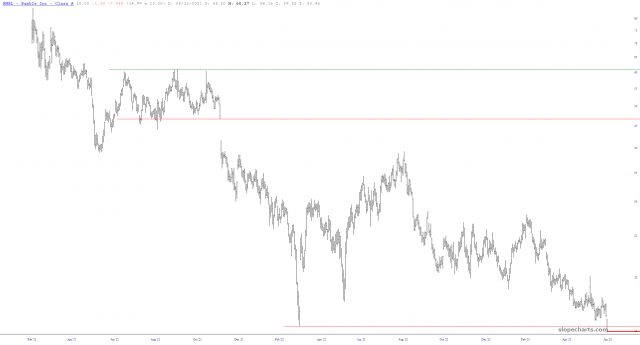
However curiosity got the better of me, and I decided to go check out the company’s website.
It all went downhill from there.
Let’s start with some foundational information. As you well know, the idea of computer “dating” has been around for decades, long before cell phones even existed. In the culture of the 1970s, the folklore about “computer dating services” was seen as both pathetic and inventive. With the advent of the smart phone, all manner of apps were introduced, ostensibly for the ultimate goal of getting a life partner, but more often than not with the pledge of bumping uglies. And, not surprisingly, since it is a biological fact that sperm is exceptionally low-value, the ratio of men clamoring for women was very high indeed.
With Match.com and Tinder and all the other websites and apps out there, the basic premise behind the founding of Bumble was “Where Women Make the First Move.” I’ve never been on one of these sites in my life, but I suppose the women got tired of being hounded constantly, so they wanted a place where they could call the shots and not be bothered by any all those gross men. Instead, they would make the aforementioned first move and take it from there. It was all about female empowerment, I suppose.

The woman who founded Bumble, Whitney Wolfe Herd, is shown below on a late 2017 cover of Forbes. This usually is enough to doom whoever is so featured, but for some reason Ms. Herd has managed to escape her fate, more or less, so far, the aforementioned 83% drop in her company’s stock notwithstanding.
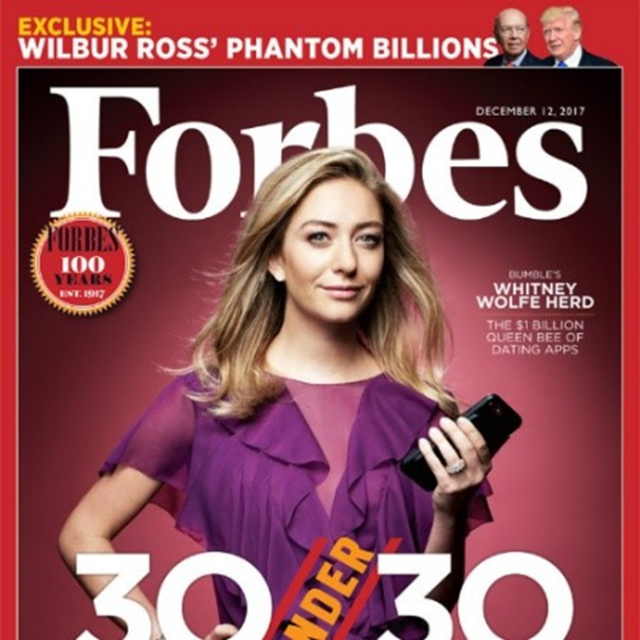
Incidentally, Ms. Herd was a co-founder at Tinder and was romantically involved with the other founder. They had a serious falling-out, both romantically and professionally, and she went off to form Bumble, which was sued thereafter by Tinder.
A few years later, she wound up marrying an heir to an oil and gas fortune, who is shown in the photo below helping her blow. He seems to have a knack for it.
.jpg)
In any case, let’s return to Ms. Herd’s creation, Bumble.
Now, the entire business model was easy to understand and easy to explain: it’s just like Tinder, except women make the first move. Any elementary school student could understand that. It seems, however, that maybe this wasn’t the money-printing opportunity that was anticipating, because judging from the website, Bumble has integrated vertically, horizontally, and sideways in an effort to find something – – anything!! – – that can turn a profit.
Thus, right on the home page, you can see that, yes, there’s Bumble Date, but there’s also Bumble Biz (which I guess is a clumsy attempt to horn in on the world of LinkedIn) and Bumble BFF (which, I suppose, is like Friendster from way back in the earliest days of the web, whose purpose is to just find friends and not necessarily locate other humans with whom to achieve sexual congress).
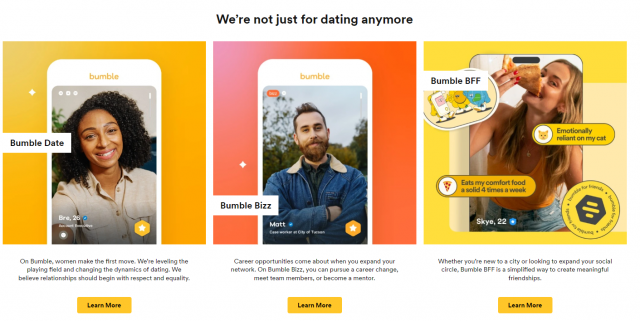
As an aside, I would mention that, oddly, right on the home page, is a huge photo of a woman staring at a screen in which they have apparently re-purposed the same pictures as featured in the Date and Biz apps. That’s just lazy, people.
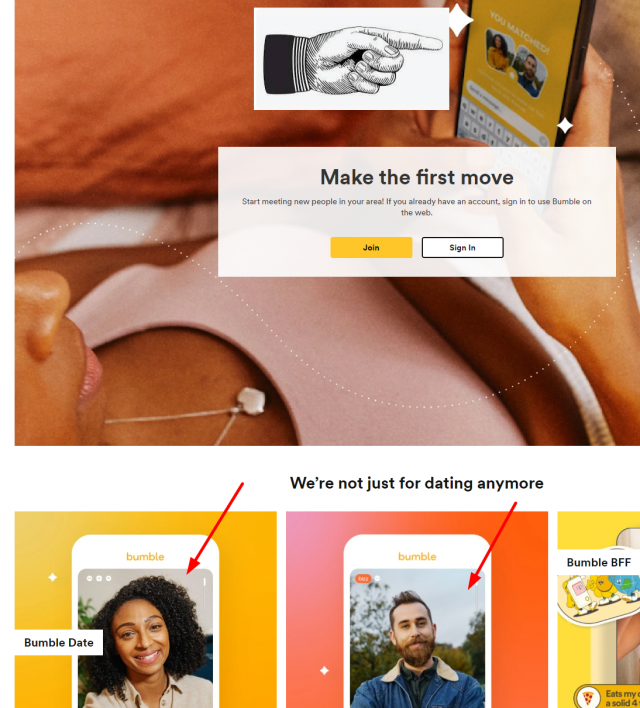
What came next in my little exploration what was surprised me the most. Bumble’s “success stories” are slathered all over the site, and the first one presented is a couple who, on the male/female continuum, both seem to be hovering at around the “50” mark.

I assure you, however, that is far and away the most normal (or should I say hetero-normative, cis) couple on the entire site. Scroll just a bit more, and you get to the real swarm in the hive……….
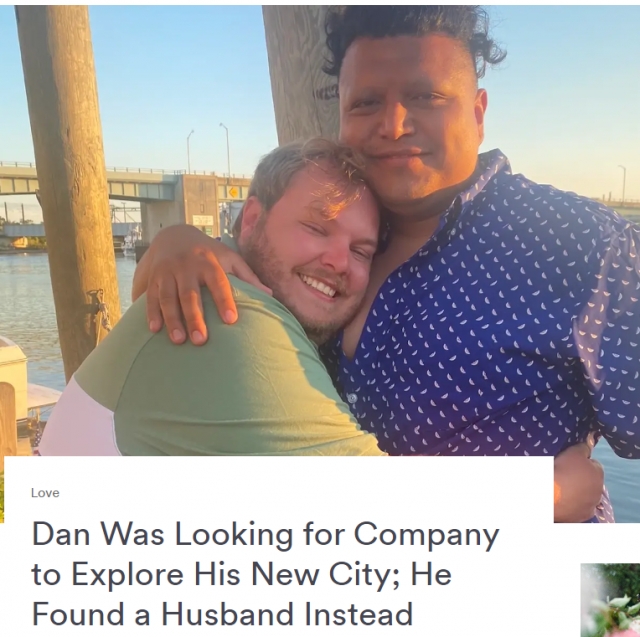
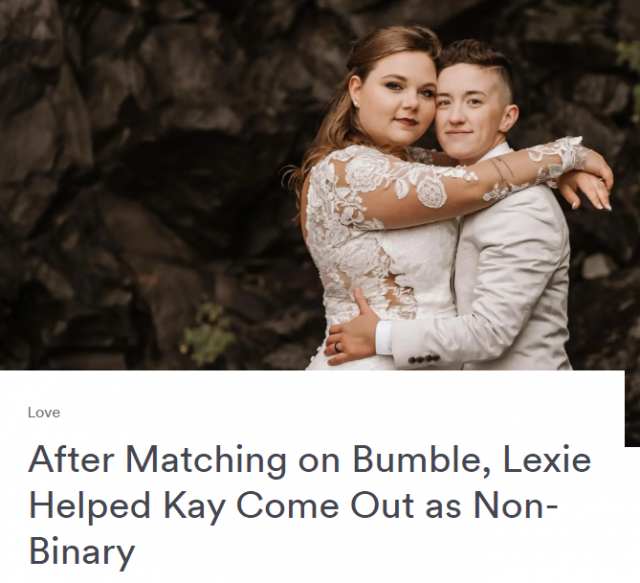

To be clear, I didn’t hack through hundreds of these to cherry-pick the odd ones. These are front and center. Indeed, if I wanted to find just a plain ol’ guy ‘n’ gal, I’m not sure how long I’d have to wade through the site before I managed to find any.
Oddly, even though this is a self-declared women-centered, women-empowered site, a lot of men (more or less) enjoy the limelight to. Take Evan Hecht (please!)
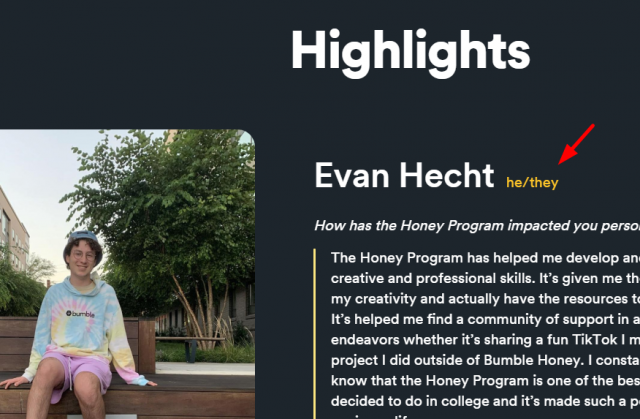
Hold on a second. If he thinks of himself as a “they“, shouldn’t he likewise tell his tale using the plural third person? Perhaps it’s best not to ask.
I would also mention a brief web search reveals that “they” have written for USA Today, which features this photo, just in case a given reader cares to know whose work he’s enjoying.

Besides encountering almost every ethnic, cultural, and gender combination mathematically possible, I also noticed that a surprising number of highlighted couples were missing body parts (which one would normally assume would be the outcome of a date gone horribly wrong instead of a prerequisite). There’s all kinds of missing limbs and deformities, but the one below kind of took the cake for me, since they commit the verbal pratfall of featuring this in relation to “cuffing“, which kind of misses the mark given the couple being featured.

Now I need to ask all of you to take a deep breath before the next image, because it isn’t an easy one. You ready? You sure? OK.
In spite of a bewildering miasma of apps, product names, and merchandise, all in what has evidently been a vain attempt to achieve some kind of EBITDA profitability, the nadir of this entire exercise has got to be the product most prominently featured, front and center, in the Bumble Store.
It is, oddly, a woman’s vibrator (since I guess the whole “use our app to find a sex partner” didn’t work out so great). One might assume that a page dedicated to the sale of an orgasm-inducing sex toy would be adorned with erotic images and gorgeous women.
One would also be wrong.
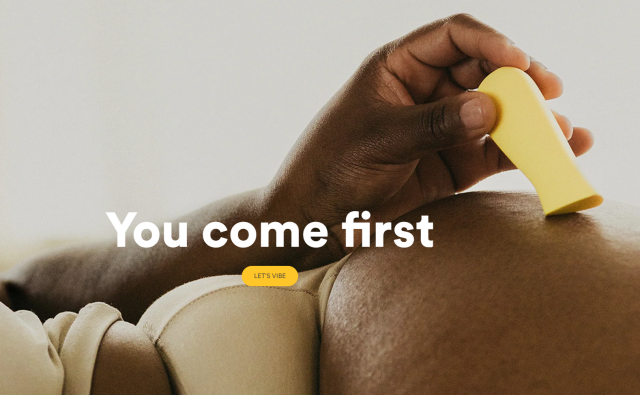
In case you’re having trouble figuring out what all those rolls and curves are, let’s just say there’s a lot of adipose tissue involved.
I mean, it’s not like the so-called dating app space is replete with success stories, and Bumble is just particularly bad at it. On the contrary, the granddaddy of them all, Match Group, has likewise lost the vast majority of its value and it similar down about 83% from its ridiculous Covid peak.
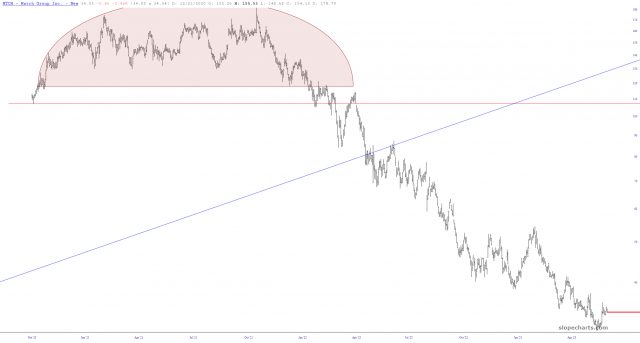
Indeed, relatively speaking, the blue chip store-of-value financial instrument is none other than Grindr (about which I will spare you any success stories or other images). GRND is down a mere 40% from its pre-SPAC price, although to be perfectly fair, its drop is about 92% if you measure the change from its post-IPO peak.
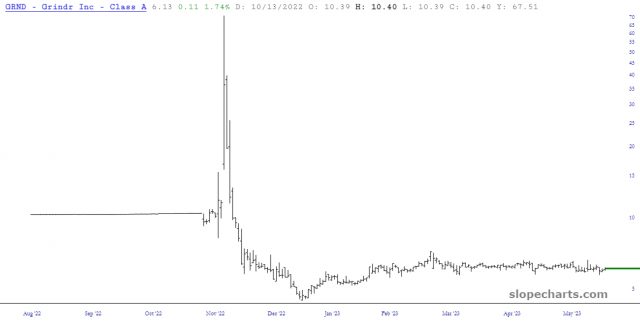
Before I left the Bumble site, I scrolled down to the footer to see what was there, since that’s usually where the boring stuff resides.
Most of the stuff there was typical footer fodder, such as social media icons, a FAQ page, a T&C page that no one readers, and a Privacy Policy read by even fewer. I would note, however, that in true Bumble fashion, they took the time and trouble to compose a lengthy statement that stated in no uncertain terms that the company does not support slavery, in case you had questions about their position. The link is right next to the link for “Investors“, those poor schlubs.

Before I bid a fond farewell to this capitalist travesty, I took a glance at the page which was supposed to summarize what Bumble was really all about. If you are looking for a coherent, unified message, I’m afraid this isn’t going to satisfy you.
Because Bumble is, of course, about Bumble. But it’s also about Badoo, as well as Fruitz.
What is Fruitz, you ask? I had the same question. I wondered if it was a competitor to Grindr. Nope. Fruitz is, evidently, a means by which open and honest dating intentions are communicated through “playful fruit metaphors.” Seriously. I’m not making this up.
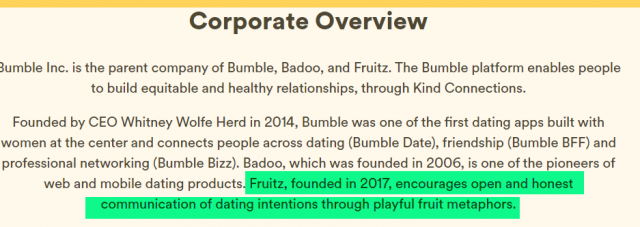
Let’s face it: Bumble would have never gone public in a normal stock market. The trillions upon trillions of fiat bucks showered onto the financial landscape produced countless public corporations that should have stayed private (or, in many cases, never have even existed) in the first place.
Bumble’s abysmal failure as an investment for the public market comes as no surprise at all. It’s just that I wasn’t expecting a firm with so much to be embarrassed about to be so absolutely full of itself.
If I may be permitted a playful fruit metaphor, I think the people behind this lemon must be bananas.

